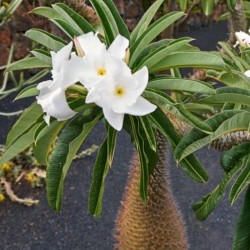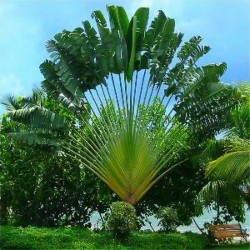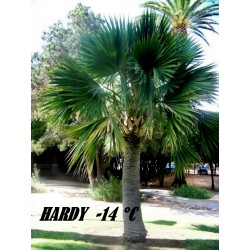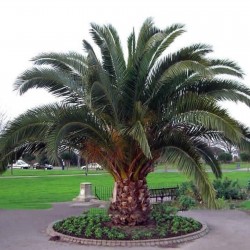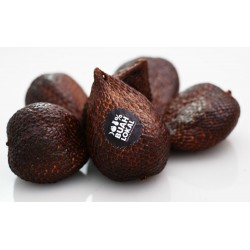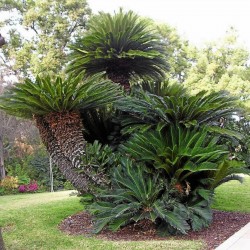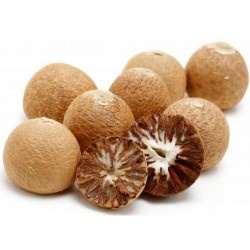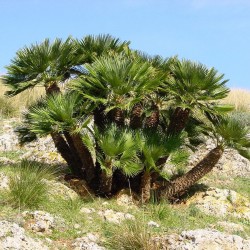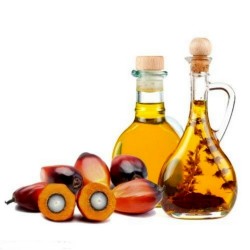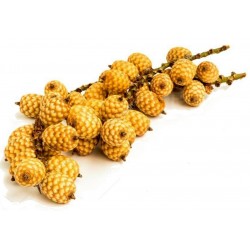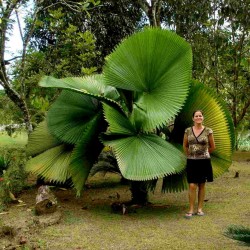
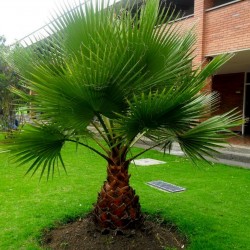
Вашингтония нитеносная...
Цена
1,95 €
SKU: PS 1
Seeds Gallery Com,
5/
5
<h2 class=""><strong>Вашингтония нитеносная семена (Washingtonia filifera)</strong></h2>
<h2><span style="color: #ff0000;"><strong>Цена за пакет из 3 семян.</strong></span></h2>
<p><b>Вашингтония нитеносная</b><span> (</span>лат.<span> </span><span lang="la" xml:lang="la">Washingtonia filifera</span><span>) — </span>вид<span> </span>однодольных растений<span> рода </span>Вашингтония<span> (</span><i><span lang="la" xml:lang="la">Washingtonia</span></i><span>) семейства </span>Пальмовые<span> (</span><i><span lang="la" xml:lang="la">Arecaceae</span></i><span>).</span></p>
<h2><span class="mw-headline">Ботаническое описание</span></h2>
<p>Дерево высотой до 16—20 м, иногда до 25 м.<span> </span>Ствол<span> </span>цилиндрический, у основания диаметром до 80—100 см, кверху незаметно сужающийся, после опадения листьев имеет рубчатую поверхность. У старых экземпляров ствол до кроны почти гладкий, тёмно-серый, с малозаметными рубчатыми следами черешков опавших листьев, верхняя часть ствола, под кроной, покрыта свисающими не опавшими старыми листьями.</p>
<p>Листья<span> </span>веерообразные, длиной до 3—4 м, серовато-зелёные, голые, листовая пластинка разрезана на одну треть глубины на сегменты в количестве 80—90, средние сегменты длиной до 1,5 м и шириной 6 см, крайние — длиной до 60—80 см и шириной 1 см, сегменты на концах двунадрезанные, по краям снабжены тонкими нитями белого цвета.<span> </span>Черешок<span> </span>листа равен длине листовой пластинки, нижняя часть черешков до половины их длины по краям снабжена желтоватыми острыми шипами, загнутыми к основанию черешка. Язычок (передний гребень) на конце черешка короткий или слаборазвитый<sup id="cite_ref-2" class="reference">[2]</sup>, стержень длиной 15—16 см. За<span> </span>вегетационный период<span> </span>образуется до 13 листьев, продолжительность их жизни до трёх-четырёх лет.</p>
<p>Соцветия<span> </span>метельчатые, длиной 3—5 м, дугообразно согнутые книзу.<span> </span>Цветки<span> </span>белые, обоеполые.</p>
<p>Плод — продолговатая<span> </span>костянка, длиной до 1 см, толщиной 0,4—0,6 см, блестящая, чёрная или тёмно-коричневая, с тонкой рыхлой мякотью. Семя яйцевидно-овальное длиной 0,5—0,6 см и толщиной 0,4—0,5 см, с вогнутым основанием.</p>
<p>Хромосомный набор<span> </span><i>2n</i><span> </span>= 36.</p>
<h2><span></span><span class="mw-headline">Распространение</span><span class="mw-editsection"><span class="mw-editsection-bracket">[</span>править<span class="mw-editsection-divider"><span> </span>|<span> </span></span>править код<span class="mw-editsection-bracket">]</span></span></h2>
<p>Северная Америка — северные и северо-западные части<span> </span>пустыни Колорадо, южная<span> </span>Калифорния<span> </span>и западная<span> </span>Аризона, а также в<span> </span>Мексике<span> </span>в штате<span> </span>Нижняя Калифорния. Натурализовалась в южной<span> </span>Неваде. Образует леса или растёт группами на низменных местах, где постоянно доступны подземные воды. Выращивается как декоративное растение почти во всех странах с субтропическим климатом. На Черноморском побережье Кавказа растёт успешно от<span> </span>Сочи<span> </span>и южнее; страдает в наиболее суровые зимы при снижении температуры до минус 7-8 С°. В районах с более сухим климатом является более зимостойкой. Хорошо растёт в<span> </span>Азербайджане<span> </span>на<span> </span>Апшеронском полуострове. На<span> </span>Южном берегу Крыма<span> </span>требует укрытия.</p>
<table cellspacing="0" cellpadding="0" border="1">
<tbody>
<tr>
<td colspan="2" width="100%" valign="top">
<p><span style="color: #008000;"><strong>Sowing Instructions</strong></span></p>
</td>
</tr>
<tr>
<td valign="top" nowrap="nowrap">
<p><span style="color: #008000;"><strong>Propagation:</strong></span></p>
</td>
<td valign="top">
<p><span style="color: #008000;">Seeds</span></p>
</td>
</tr>
<tr>
<td valign="top" nowrap="nowrap">
<p><span style="color: #008000;"><strong>Pretreat:</strong></span></p>
</td>
<td valign="top">
<p><span style="color: #008000;">soak in water for 3-4 hours</span></p>
</td>
</tr>
<tr>
<td valign="top" nowrap="nowrap">
<p><span style="color: #008000;"><strong>Stratification:</strong></span></p>
</td>
<td valign="top">
<p><span style="color: #008000;">0</span></p>
</td>
</tr>
<tr>
<td valign="top" nowrap="nowrap">
<p><span style="color: #008000;"><strong>Sowing Time:</strong></span></p>
</td>
<td valign="top">
<p><span style="color: #008000;">all year round</span></p>
</td>
</tr>
<tr>
<td valign="top" nowrap="nowrap">
<p><span style="color: #008000;"><strong>Sowing Depth:</strong></span></p>
</td>
<td valign="top">
<p><span style="color: #008000;">1 cm</span></p>
</td>
</tr>
<tr>
<td valign="top" nowrap="nowrap">
<p><span style="color: #008000;"><strong>Sowing Mix:</strong></span></p>
</td>
<td valign="top">
<p><span style="color: #008000;">Coir or sowing mix + sand or perlite</span></p>
</td>
</tr>
<tr>
<td valign="top" nowrap="nowrap">
<p><span style="color: #008000;"><strong>Germination temperature:</strong></span></p>
</td>
<td valign="top">
<p><span style="color: #008000;">min. 20 ° C</span></p>
</td>
</tr>
<tr>
<td valign="top" nowrap="nowrap">
<p><span style="color: #008000;"><strong>Location:</strong></span></p>
</td>
<td valign="top">
<p><span style="color: #008000;">bright + keep constantly moist not wet</span></p>
</td>
</tr>
<tr>
<td valign="top" nowrap="nowrap">
<p><span style="color: #008000;"><strong>Germination Time:</strong></span></p>
</td>
<td valign="top">
<p><span style="color: #008000;">until it germinates </span></p>
</td>
</tr>
<tr>
<td valign="top" nowrap="nowrap">
<p><span style="color: #008000;"><strong>Watering:</strong></span></p>
</td>
<td valign="top">
<p><span style="color: #008000;">Water regularly during the growing season</span></p>
</td>
</tr>
<tr>
<td valign="top" nowrap="nowrap">
<p><span style="color: #008000;"><strong> </strong></span></p>
</td>
<td valign="top">
<p><br><span style="color: #008000;"><em>Copyright © 2012 Seeds Gallery - Saatgut Galerie - Galerija semena. </em><em>All Rights Reserved.</em><em></em></span></p>
<div><span style="color: #008000;"><em> </em></span></div>
</td>
</tr>
</tbody>
</table><script src="//cdn.public.n1ed.com/G3OMDFLT/widgets.js"></script>
PS 1 (3 S)





